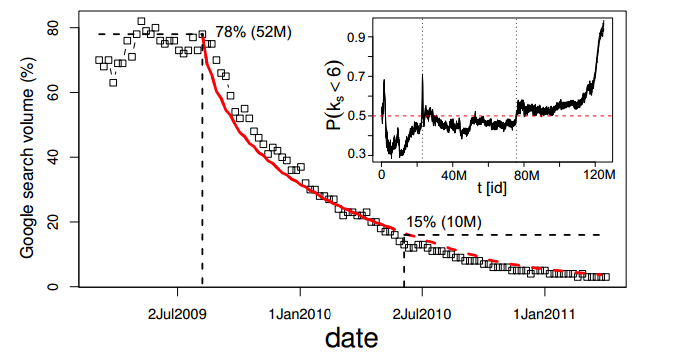Best of 2013: An Autopsy of a Dead Social Network
Friendster is a social network that was founded in 2002, a year before Myspace and two years before Facebook. Consequently, it is often thought of as the grand-daddy of social networks. At its peak, the network had well over 100 million users, many in south east Asia.

In July 2009, following some technical problems and a redesign, the site experienced a catastrophic decline in traffic as users fled to other networks such as Facebook. Friendster, as social network, simply curled up and died.
This is the company that famously turned down a $30m buyout offer from Google in 2003.
(Friendster has since been rebranded as a social gaming platform and still enjoys some success in south east Asia.)
The question, of course, is what went wrong. Today, David Garcia and pals at the Swiss Federal Institute of Technology in Zurich, give us an answer of sorts. These guys have carried out a digital “autopsy” on Friendster using data collected about the network before it gave up the ghost.
Keep Reading
Most Popular
Large language models can do jaw-dropping things. But nobody knows exactly why.
And that's a problem. Figuring it out is one of the biggest scientific puzzles of our time and a crucial step towards controlling more powerful future models.
How scientists traced a mysterious covid case back to six toilets
When wastewater surveillance turns into a hunt for a single infected individual, the ethics get tricky.
The problem with plug-in hybrids? Their drivers.
Plug-in hybrids are often sold as a transition to EVs, but new data from Europe shows we’re still underestimating the emissions they produce.
Google DeepMind’s new generative model makes Super Mario–like games from scratch
Genie learns how to control games by watching hours and hours of video. It could help train next-gen robots too.
Stay connected
Get the latest updates from
MIT Technology Review
Discover special offers, top stories, upcoming events, and more.